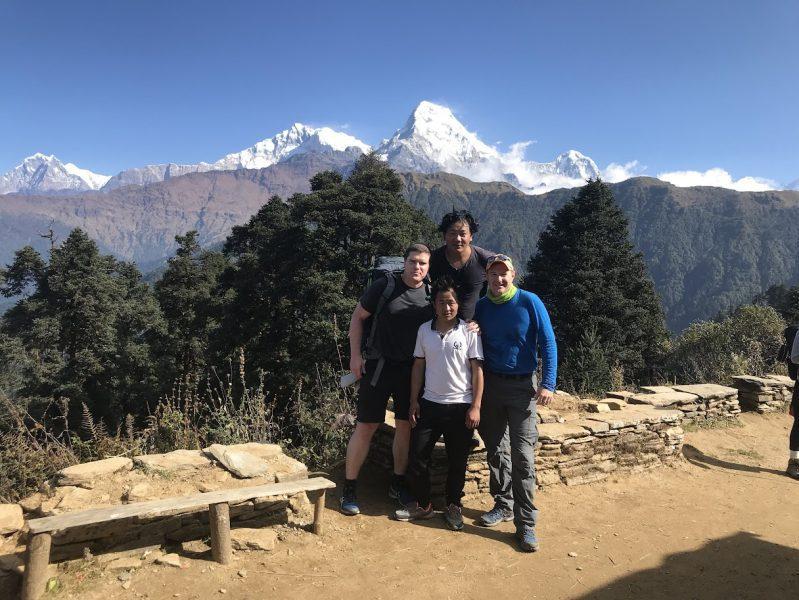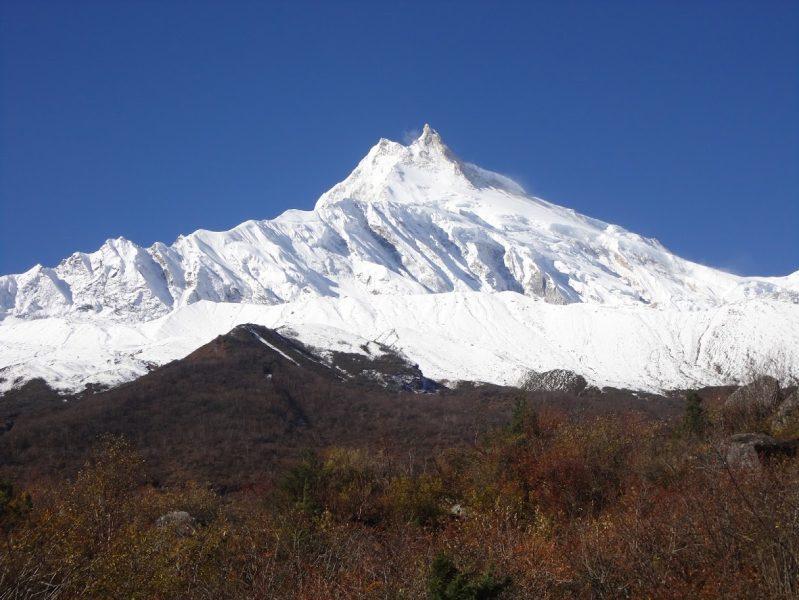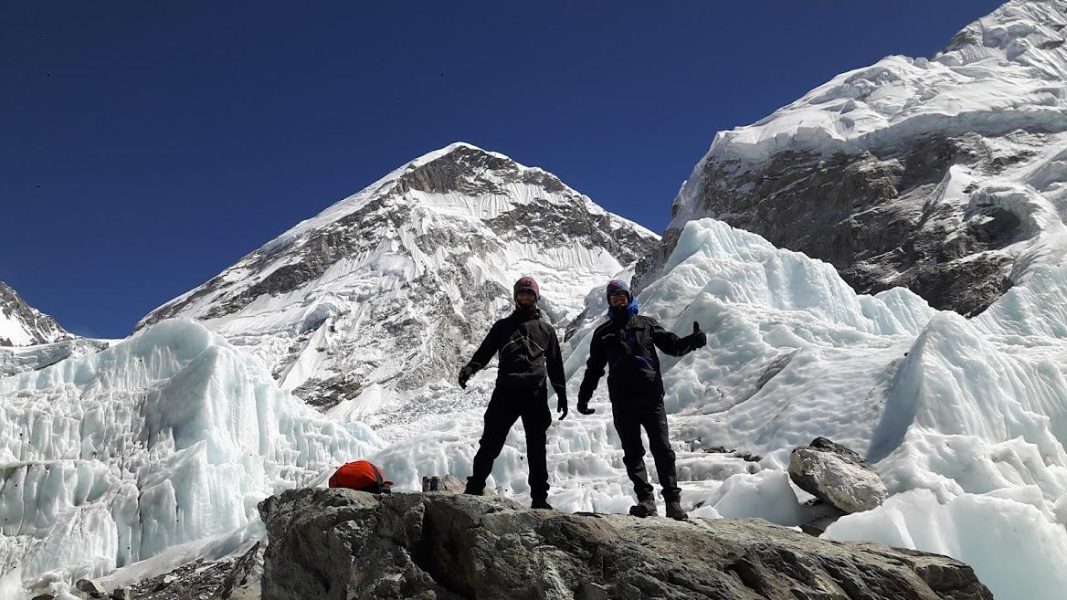- Home
- single package
Kanchenjunga Classic Trekking
Kanchenjunga RegionTrip Grade
HardTrip Type
TrekkingMaximum Elevation
5360 MAccomodation
Camping/ Home Stay/LodgeDestination
Kanchenjunga RegionBest Time
Oct-Nov/March-MayTrip Start
SuketarTrip Ends
Sukerar-Taplejung.Overview
Kanchenjunga Classic Trekking
Kanchenjunga Classic Trekking is a challenging trekking route that takes you to the base camp of the third-highest mountain in the world, Kanchenjunga (8,586m). The trekking trail covers a distance of around 184km and offers breathtaking views of the Himalayan range, including Mount Everest, Makalu, and Kanchenjunga.
The trek begins with a scenic flight from Kathmandu to Biratnagar, followed by a drive to Taplejung. From Taplejung, the trek starts and passes through beautiful forests, terraced fields, and traditional villages inhabited by Rai and Limbu communities.
The first few days of the trek are relatively easy, with gradual climbs and descents. However, as you move towards higher altitudes, the trail becomes more challenging and demanding. You will cross several high mountain passes, including Sele La (4,290m), Mirgin La (4,480m), and Sinelapche Bhanjyang (4,616m).
Along the way, you will be able to witness the unique flora and fauna of the region, including rare species such as red panda, snow leopard, and Himalayan black bear. You will also have the opportunity to interact with the local people and learn about their culture, traditions, and way of life.
The highlight of the Kanchenjunga Classic Trek is undoubtedly the breathtaking views of the Himalayan range, including the majestic Kanchenjunga. The trail takes you to the base camp of Kanchenjunga, where you can witness the towering peak up close.
The best time to undertake the Kanchenjunga Classic Trek is from March to May and from September to November. The weather during these months is pleasant, and the views are spectacular.
Kanchenjunga Classic Trek is a once-in-a-lifetime experience that offers a unique blend of natural beauty, cultural exploration, and adventure. However, due to the challenging terrain and high altitude, this trek is recommended only for experienced trekkers who are in good physical condition.
Itinerary
Welcome to Kathmandu. As you land at the airport, our staff will receive you and transfer you to your hotel where you can rest and prepare for the upcoming trek.
Today we will spend time in Kathmandu taking care of the permits and any last minute shopping and purchases we have to make. Overnight at the hotel.
Early in the morning, we will take a flight to the eastern region of Nepal to Bhadrapur Airport. As soon as we are airborne, we will be able to see the many mountains of the Great Himalayas that cover the Nepalese territory on the northern side throughout its length. It is a wonderful and joyous feeling seeing the Himalayas below us, and soon we will be in the lap of one of the many giants. From Bhadrapur, we will take a short drive to reach the tea heaven Ilam, where we stay for the night.
Today we will drive to Suketar which is around 220kms from Ilam. We will continue to travel on the Mechi Highway till its end. The winding roads through lush green hills make it a very beautiful ride, where we will be crossing the Mai Khola, Kabeli River, and many fields of various crops. Driving through bumpy and narrow roads, we arrive in the small town of Suketar. Overnight in Suketar.
We begin our trek from Suketar and enter through the Limbu village, which is the gateway to this trek. Through the forest of cardamom, we will make our way to Hangdewa. Many tea shops and guest houses line the way as we cross suspension bridges and walk along the banks of a small stream to finally climb uphill to reach Phurumbu. Overnight in Phurumbu.
From Phurumbu, we will initially climb uphill for a while and then slowly descend through dense forest until we reach Sinwa Bazaar, which is likely to take us around 3 hours. After having our lunch here, we will start walking alongside the Tamor River until we reach the entrance gate to the Kanchenjunga Conservation Area Project at Thiwa. From here, we will descend until reaching Chiruwa, which is a small market area. Overnight in Chiruwa.
As we make our way to Sukethum, we will meet some beautiful meadows and will reach the gate of Kanchenjunga Conservation Area, where our permits will be checked. We will cross the Tamor River and start walking on the trail which goes through lush forests. This region has bountiful flora and fauna, and many different species of butterflies can be seen fluttering. We will slowly then ascend on a steep hillside and cross the Tamor River one more time to make a short climb to Sukethum. Overnight in Sukethum.
With views of the Kumbakarna or Jannu Mountain (7711m), we will make our way to Amjilosa. This walk is rather tough than the days before because we will walk on narrow slippery paths and cross the river on old wooden bridges. We will see deep gorges and will also climb in and out of one. Finally, we will reach Amjilosa, which is a small village with a collection of lodges situated on the hill high above the gorge. Overnight in Amjilosa.
Following the hillside through dense lush forests, we will move further today. This is a narrow path which is exposed in many places and also has wild bamboo taking over the surrounding. We will slowly begin to climb up and cross a few waterfalls and bridges. As we enter Gyabla, we will be able to view the emerging Kyabru range. Gyabla is a small beautiful Tibetan settlement where the air is much cooler and gives you a sense of finally entering the mountains. Overnight in Gyabla.
Gearing up in warmer clothes, we will begin our walk to Ghunsa and reach the river once again. As we walk, we will be entering the jungle of larch pine and then a wide valley. This section of the walk is relatively easy. We will stop in Phole for lunch, where we can see yaks and their herders along with an old Gompa ruin. We will walk for 2 more hours before we reach the village of Ghunsa, which houses the Kirats and also has a small hydroelectricity power plant. Overnight in Ghunsa.
Today is the first day of acclimatization, and we will do so by hiking in and around Ghunsa. This is an ideal day to clean up and also to prepare and sort out our gear before we begin the difficult portion of this trek. Ghunsa village is located at the foothill of the Jannu Mountain (7711m), and we can see many small houses of wood and mud made beautifully by the natives. The Jannu is considered a sacred mountain by the people of this region who believe it has spiritual powers. We can hike up to Tashi Choding Gumba and the small yet beautiful waterfall behind it. Overnight at Ghunsa Village.”
Today we will make our way out of Ghunsa to Kambachen with incredible views of the snow-capped mountains. We will follow the river to beautiful meadows and alpine forests and isolated juniper patches. Kambachen is one of the temporary settlements of this region as people move their residence according to the weather; during summer time they gain altitude while in winter they move to a lower altitude. Overnight in Kambachen.
On the hillside of the northern banks of the river, we will make our way to Lhonak. The trail takes us through a waterfall, which has icy cold water and needs hopping over its boulders. We will ascend to beautiful pasture and grazing lands with yaks as we continue to gain altitude. We will get a good view of the Kanchenjunga Glacier, and Chang Himal (6802m) becomes visible to us as we enter Lhonak. Overnight in Lhonak.
Today we will make an excursion to Pangpema Base Camp and return to Lhonak. On the way, we will pass through some narrow trails and ice-covered areas as we follow Kanchenjunga Glacier upward. The Chang Himal (6802m) can be seen looming upon our right-hand side and the horizon can be seen covered with various mountain ranges, including Kanchenjunga (8586m). The peaks of Kirat Chuli (7362m) and Nepal Peak (7177m) appear almost touchable from Pangpema. After the exploration of Pangpema Base Camp, we will head back to Lhonak for the overnight stay.
Retracing our steps and enjoying the wonderful scenery, we make our back to Ghunsa today. We will enjoy the beauty of Junna Mountain (7711m) as we return to Ghunsa. This time the feeling and excitement of reaching Ghunsa are different from what was before. Overnight in Ghunsa.
Passing the hydroelectricity plant, we make our way to Sele le today and gain a considerable amount of altitude. We will pass through jungles of pine, juniper, and rhododendron as we begin to take a steep and rocky climb up the hill. As we exit the rocky and lush jungles, we will reach Sele le, a small camping spot next to a pristine stream where there is big boulders green in color due to moss and lichen covering it. Overnight in Selele.
This is a challenging walk as compared to the other days we’ve had. We will start walking up a steep hill towards Sele Le Pass (4480m) with the view of Mount Kanchenjunga (8586m) and Jannu (7711m). We will walk taking small but continuous steps so that we do not tire easily. We will walk uphill for a while and then descend on a trail with many boulders on the way. We will reach Cheram after descending for a couple of hours. Overnight in Cheram.
This is an easy trek from Cheram to Tortong. We will take the trail that goes through Anda Phedi and enters dense forests of rhododendron. We will lose quite an altitude today. We will also see the Simbuwa Khola and walk on the path next to it before reaching our destination Tortong, which is a small settlement with homestays and tea houses. Overnight in Tortong.
The most challenging part of today’s trek will be the climb to the hill top after crossing Simbuwa Khola. The steep uphill climb brings you to the top of Lasiya Bhanjyang (3310m) and then descends alongside Amji Khola to reach the traditional Rai village of Yamphudin. You can spend your free time here by exploring the village and getting to know about the Rai way of life. Overnight in Yamphudin.
From Tortong, we will move early in the morning towards Yamphudin, which is one of the biggest Rai settlements in this region. There are some good tea houses along this trail. Descending alongside Kabeli Khola through the forest, we will reach the settlement of Mamankhe, where there is a Limbu Museum and Cultural Center that showcases the culture and tradition of the Limbu folks residing on the lower sections of Kanchenjunga. Overnight in Mamankhe.
After crossing Mamankhe and following the similar terrain, we make our way downhill. There are many cardamom plantation areas along the way, and we will pass through many small settlements before we reach the Khesewa River and cross it to reach Khesewa village. Overnight in Khesewa.
We will follow a similar landscape with cardamom gardens and rhododendron patches as we make our way to Lalikharka. We will have lost considerable altitude and are almost reaching the end of our trek. It is also an ideal time to immerse ourselves in the wonders of nature before reaching back to the stress of city life. Overnight in Lalikharka.
Following the trail through the forest, we will make our way to Suketar today. When we first left this place, we were filled with excitement for the journey, but now we will feel a different kind of excitement. A feeling of accomplishment and pride is bound to take over you as you reach Suketar and head to the village of Taplejung. Overnight in Taplejung.
From Taplejung, with scenic views, we make our way to Ilam, which is famous for the tea estates and its lush green gardens. You can take this chance to visit the estate in the hills of Ilam and also taste a few of the tasty brew. Overnight in Ilam.
From Ilam, you drive to Bhadrapur and then take a scenic flight to Kathmandu. After arriving in Kathmandu and checking into your hotel in Kathmandu.
We will once again take you around the valley. There are so many sites to visit, so you can take the whole day to explore the capital city. Bhaktapur Durbar Square is the first site that you visit today. It is one of the oldest and the most famous palace squares in Kathmandu valley. After visiting Bhaktapur Durbar Square, you head on to other cultural sites like Changunarayan Temple and Patan Durbar Square. In the evening, you join the group for a farewell dinner hosted by the company.
The trip comes to an end today. Our office representative will drive you to the airport 3 hours prior to your scheduled flight.
What's Include in Cost
- Airport pick up and drive according to itinerary and plan.
- Hotel in Kathmandu with breakfast.
- Sightseeing in Kathmandu as per program.
- Cultural guide and private vehicle during the sightseeing.
- Monument entrance fees during the visit in Kathmandu according as per program.
- Kanchenjunga special trekking permit.
- Kanchenjunga Conservation permit.
- TIMS cards: Trekking Information Management System.
- Food and accommodation during the trekking: B/L/D.
- Hot drinks- Teak, Coffee, during the trek.
- Domestic flight tickets: Kathmandu to Bhadrapur to Kathmandu for members and guides.
- Porters and guide with their wages, transportation.
- Land Transportations as per itinerary.
- Insurance for local staffs: Guide, Porter and assistant.
- High altitude chamber as per requirement.
- Local airport tax and land transportation according to program.
- Applicable Nepal government tax.
What's Excluded in Cost
- Nepal entry visa.
- International flights and airport tax.
- Travel insurance.
- Personal expenses, Hot or Mineral water
- Laundry service and Bar Bills
- Internet and Battery charge
- Alcoholic drinks with mineral water.
- Rescue in emergency.
Fixed Departure
| SNo.0 | Date | From | To | |
|---|---|---|---|---|
| 1 | 15/03/2023 | On your demand | Enquiry This | |
| 2 | 03/04/2023 | On your demand | Enquiry This | |
| 3 | 07/10/2023 | On your demand | Enquiry This | |
| 4 | 18/10/2023 | On your demand | Enquiry This |
Equipment
Advisory
Inportant Things Required
FAQ
When you are up in the mountains in Nepal, we would suggest you to be ready for anything. Weather forecasts for Lukla are never correct and different sources will give you different information. If it is a really bad day in terms of weather, the airlines will themselves cancel the flight and you might have to wait till the weather clears. Yes, flying in high altitude is never easy, even on a clear sunny day, the plane might face turbulence because of the wind blowing from the mountains. But overall the flight to Lukla is very exciting and it’s an experience that you will never forget.
When you are up in the mountains in Nepal, we would suggest you to be ready for anything. Weather forecasts for Lukla are never correct and different sources will give you different information. If it is a really bad day in terms of weather, the airlines will themselves cancel the flight and you might have to wait till the weather clears. Yes, flying in high altitude is never easy, even on a clear sunny day, the plane might face turbulence because of the wind blowing from the mountains. But overall the flight to Lukla is very exciting and it’s an experience that you will never forget.
When you are up in the mountains in Nepal, we would suggest you to be ready for anything. Weather forecasts for Lukla are never correct and different sources will give you different information. If it is a really bad day in terms of weather, the airlines will themselves cancel the flight and you might have to wait till the weather clears. Yes, flying in high altitude is never easy, even on a clear sunny day, the plane might face turbulence because of the wind blowing from the mountains. But overall the flight to Lukla is very exciting and it’s an experience that you will never forget.
When you are up in the mountains in Nepal, we would suggest you to be ready for anything. Weather forecasts for Lukla are never correct and different sources will give you different information. If it is a really bad day in terms of weather, the airlines will themselves cancel the flight and you might have to wait till the weather clears. Yes, flying in high altitude is never easy, even on a clear sunny day, the plane might face turbulence because of the wind blowing from the mountains. But overall the flight to Lukla is very exciting and it’s an experience that you will never forget.
















